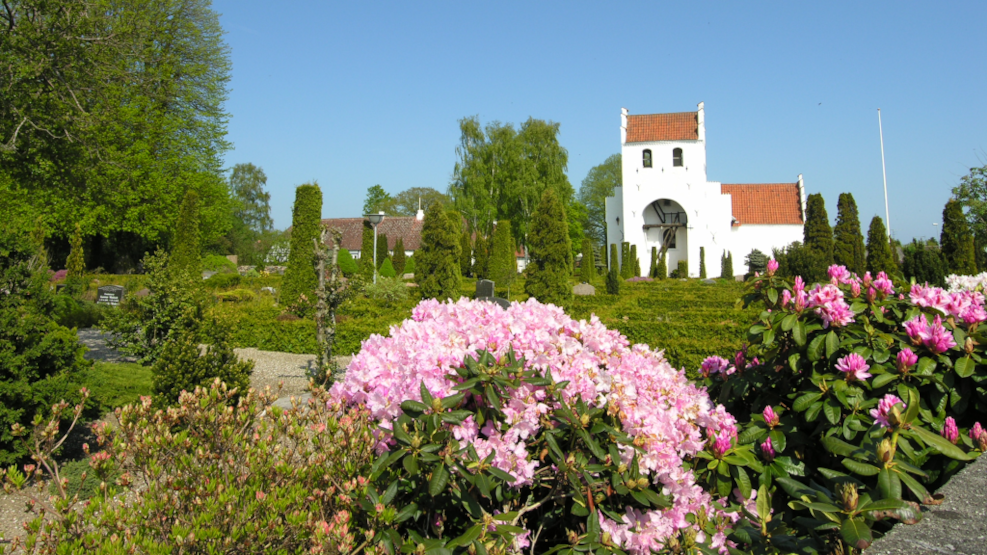
Gylling Church
In the village of Gylling, south of Odder, lies an ancient Romanesque church from the 12th century. This village church, visually distinctive with its characteristic stilted tower, features several fascinating historical artifacts, including a Viking-era runestone.
Romanesque church in an idyllic village
Nestled in the fertile land between Odder and Horsens Fjord lies the village of Gylling, where the town's church has been a central gathering point for 900 years. Gylling Church dates back to the late 12th century, similar to many original Danish stone churches. The relatively large church consists of an original Romanesque nave and choir, along with a porch and tower from the 16th century.
The church has undergone numerous renovations, evident in its masonry, where various materials have been used, and old tombstones, discarded window fragments, and other odds and ends have been built into the walls. Despite this, the church appears beautifully whitewashed, with a gabled roof and a distinctive tower. The tower is a so-called stilt tower, with an open entrance to a wooden staircase leading up to the bell. There are not many of these types of towers in Denmark—they are found almost exclusively in East Jutland. They were often referred to as a budget-friendly version of traditional, walled towers. However, Gylling Church has always had wealthy ownership, being owned by knight Laurits Trugotsen, the Danish crown, Åkjær Estate, and Gyllingnæs Estate, so financial hardship was likely not the reason for the stilt tower.
Inside the church, the first thing you notice is the uniform dark wood, seen in the flat beam ceiling, benches, and pulpit, creating an atmospheric and pleasant space. The pulpit is a beautifully crafted piece of woodwork. The altarpiece was created by the Horsens-based carver Peder Jensen Kolling, whose work is found in many local churches. The unique, shiny pink color is a hallmark of his creations. The Romanesque baptismal font has stood in the church since it was built.
The runestone
In the porch stands a Viking-era runestone, known as the Gylling Stone, likely from the 10th century. Some of the text is worn and unclear, but the decipherable portion can be translated as follows: "Toke, son of Troels, raised this stone in memory of ... good ... and Risbiik, his brother." Interestingly, the name Toke appears on many Danish runestones of the time, but it is believed to be coincidental. Troels was a common boy's name in Denmark at the time. For example, there is another runestone at Sdr. Vissing Church that also mentions a Toke.
Otto Møller
Otto Møller was a theologian who became nationally known as an author. He wrote many books that sparked debate and are now considered recognized works. Otto Møller moved to Gylling at the age of 10 when his father became the local pastor. Later, he took over the pastoral role from his father, serving from 1860 until his death in 1915. Otto Møller was a knight, recipient of the Order of the Dannebrog, and a commander. He lived at the beautiful Gylling Parsonage, next to the church. A memorial stone in his honor stands outside the parsonage, located at the junction of Fallingvej and Lerdrupvej.
A walk around the churchyard
Around the church is a large, beautiful churchyard with several interesting, historically valuable tombstones. Forty-two of these stones have been selected and given a QR code. By scanning the code, you can learn about the person buried there and why the particular stone is so unique.
Visiting the church
Gylling Church is open during the sexton's regular working hours on weekdays. Visitors are welcome to look inside, though the church may be in use for religious services.
More historical attractions
Kystlandet offers many fascinating historical attractions, from ancient times to industrial history. From museums to architectural sites and attractions in nature, there’s plenty of historical attractions near Horsens, Odder, and Juelsminde.